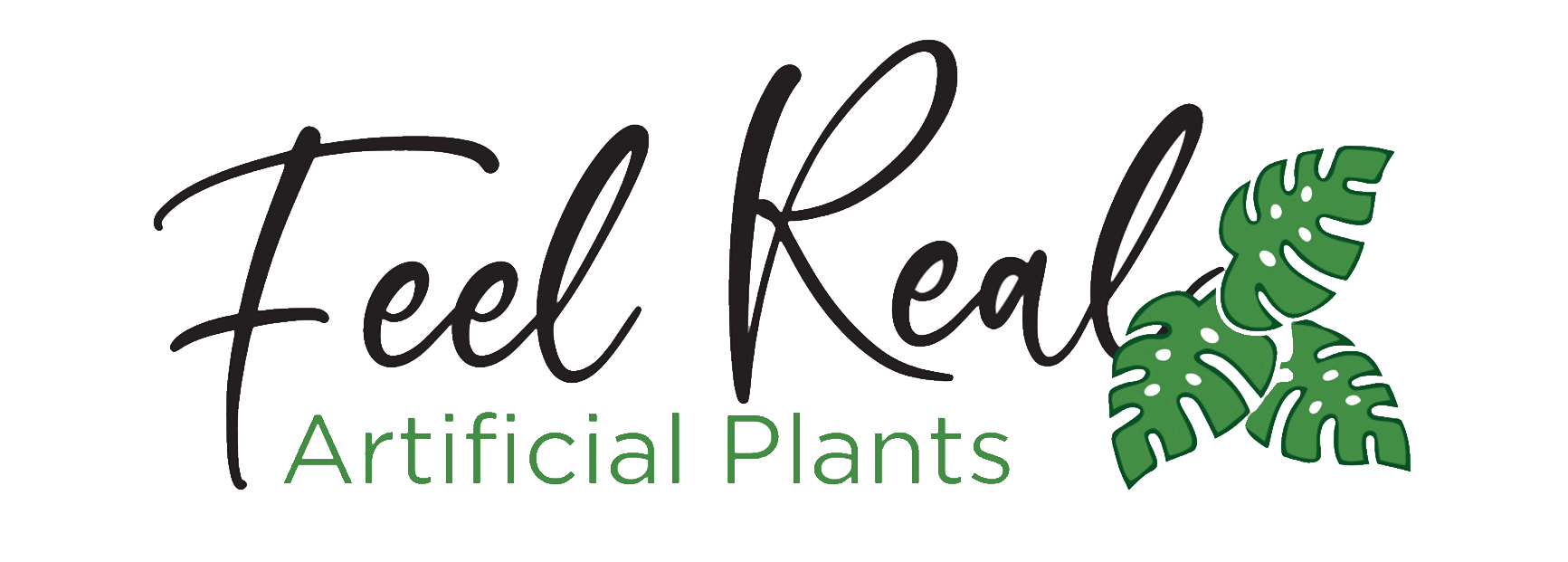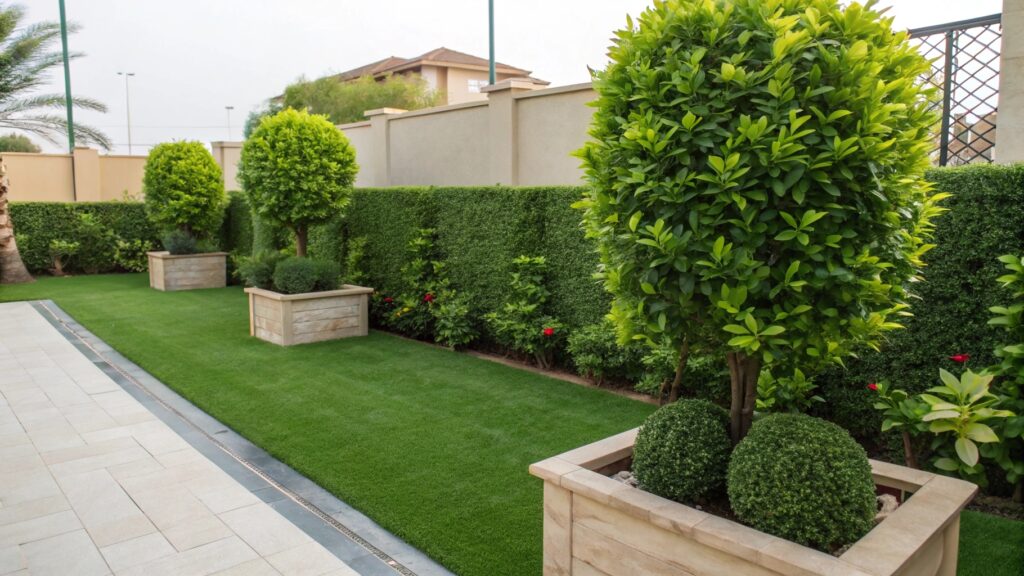Transforming your walls into aesthetic, lush green spaces, whether in your office, backyard, balcony, or home, can significantly enhance your privacy and ambiance. Artificial vertical gardens are becoming more and more popular in both commercial and residential spaces – from outdoor courtyards to indoor living rooms – bringing out that dramatic greenery feature with zero maintenance, unlike real plants.
Coming up with a realistic fake vertical garden requires more than just slapping greenery panels onto your wall. With thoughtful materials, installation, mixing techniques, and upkeep, your fake bushes will resemble the real thing.
This article will give you a full walk-through: from professional installation techniques to picking top-quality plants, improved styling, authenticity-enhancing tips, and cleaning strategies that will turn your flat wall into a vibrant green tapestry that mimics live plants.
How To Choose Ultra-Realistic Vertical Garden Plants for Maximum Impact
Choosing the perfect plant materials is the first step to creating any realistic faux vertical garden. As a manufacturer of fake plants, years of experience have shown these factors lead to success:
Quality Materials
Premium panels don’t lose shape or color after a season and should not feel like low-cost plastic. To stay clear of the brittleness or telltale shine of low-grade plastic, go for the durable synthetic ones.
We recommend polyethylene (PE) and multi-ply polypropylene (PP) that come with soft-touch silk leaf overlays. Such combinations are more realistic and won’t crack when exposed to the harsh outdoor sun or when placed in shaded indoor settings. Remember to always go for materials that are UV resistant to protect your plants from fading, especially when you’re purchasing for outdoor use.
If you’re in the market for fake green decoration for high-traffic areas, such as hotel lobbies, we do reinforcement of stems using secure PE basket backing and sturdy nylon cores to ensure your panels are firm and they don’t droop.
Multi-Tone Leaf Coloring
Typically, real plant leaves show subtle color variations. To match that, we make leaves with speckled edges and tonal gradients to perfectly avoid the common “monotonous green.” Our dyeing process involves subtle veining and the use of gradient sprays to bring out foliage with real botanical reference. Such tone shifts will make you understand the difference between “authenticity and artifice.”
Different Leaf Sizes and Shapes
A vertical garden that mixes ferns, tiny accents, shrubs, and large leaves always feels dimensional and dynamic. We design vertical panels with leaf clusters of varying depths and shapes for the perfect natural foliage collage. Our collection includes ivy vines, smaller sprigs, fern fronds, and large banana leaves.
UV-Resistant Properties
Plants designed for outdoor spaces usually require extra specifications to retain their color under harsh conditions, such as sun and rain. Purchasing UV-resistant materials will ensure panel longevity and improve overall visuals, especially for your backyard, balcony, or exterior hedge installations.
We use UV stabilizers for both pigment and resin to ensure our panels maintain pliability and color even when exposed to the sun. Our products are also subjected to ASTM G154-12a weather testing to guarantee over five years of vibrant greenery without warping or cracking.
Techniques To Make Artificial Vertical Gardens Look Real
Now that you have purchased the perfect panel, what’s next? Realism in your vertical garden will require a professional layering technique, despite the plants that you choose. Even the most premium panels will require some styling finesse to fool the eye.
These techniques will ensure your garden emulates nature’s complexity.
Mixing Real and Fake Plants Creates Ultimate Realism
Blending real and fake plants strategically will bring out authenticity any day. You can go for durable live plants, such as low-light philodendrons, in planters at the base of artificial walls to extend their depth. Such real plant textures complement premium false foliage, especially in indoor settings, and do away with the synthetic or flat appearance.
If you are looking to install a vertical garden in co-working spaces or lounges, you can add some small pots of live ivy or succulents at the base. The natural plants will give your installation a real layer of organic form and motion.
Create Natural Layering and Depth
Always stay away from flat and pattern-like walls by creating walls with plants of different heights. Instead of just mounting your panels against the wall, you can choose to create a depth layer of about 2-3 inches using wooden spacers or battens.
Layer your panels in such a way that some of the foliage recedes and others project forward. Thicker foliage will be perfect if placed in the back, while the more delicate ferns, flowers, or vines should be left to drape forward. PU moss, plastic vines, and silk ivy will create interest and depth.
Mix tall, structural leaves with cascading softer vines as you would find in jungle undergrowth. Such a setup will make your greenery more immersive and less stuck-on.
Proper Leaf Fluffing and Arrangement
Another technique to make your faux greenery look real is “leaf choreography.” Once you have installed your vertical garden, take some time to twist, open, and bend each leaf individually. Bending your leaf edges outward will create a life-like movement, while slightly rotating veins or curling leaf edges upward creates the much-needed natural randomness.
Using Background and Frame Techniques
Whatever will be behind your green wall is very important – it will influence perception. Mount your panel on charcoal backing or dark wood battens to stimulate shadows and depth. Keep your frames (border vines or inner rings) edged with trailing vines to conceal the seams and create a holistic design.
Clean Your Artificial Vertical Garden
Dust traps once they reflect will always scream “fake.” Always make it a habit to maintain your faux plants or greenery every month, especially in hotel lobbies, office screens, or fenced courtyards.
To clean your artificial garden, use microfiber cloths or dry brushes, or gentle sprays to gently wipe your leaves. You can also add some mild detergent for indoor plants or a mist of water for outdoor faux greenery to get rid of grime and restore sheen. A good dusting and cleaning will always leave your false plants realistic and fresh all year round.
How To Install Your Artificial Vertical Garden for Maximum Authenticity
Installation is where design meets craftsmanship. The approach you choose will greatly determine how realistic your wall of greenery will look. Here’s how to install your vertical garden.
Surface Preparation Matters
Whether you are dealing with exterior hedge systems or interior screen panels, always prepare your fence or wall and make it level. Make sure that your wall is smooth, level, clean, and dry.
For indoor installation, get rid of any damp spots to protect your panels from warping. On the other hand, for outdoor setups, include weather-proof sealant and a moisture barrier to prevent your building envelope and plant panels. A weatherproof primed surface will protect the back panels from mildew or rot.
Panel Arrangement for Natural Flow
For the perfect panel arrangement, avoid obvious grid patterns. Here is how to avoid grid-like patterns:
- Alternate your patterns to ensure vines crossover joints
- Use staggered seams to offset panels
- Subtly shift your leaf direction by rotating adjacent panels
These will give your faux greenery a layered tapestry effect rather than the “tiled mat” look.
Hiding Hardware and Mounting Systems
Always use clip systems that will fasten your backsides out of sight. Go for double-sided tapes, clips concealed behind foliage, or screws topped with matching caps. For heavy designs, ensure you embed your conner screws before you clad the heavyweight stems.
Our products come with installation guides and pre-drilled slots to ensure you don’t end up with exposed hardware. Most products come with magnetic locking strips and recessed brackets for the perfect DIY installation that will keep your screws hidden.
Edge Treatment and Blending Techniques
Typically, edges show artifice. You can camouflage them using cut-off scraps, shrub pieces, floral grasses, and trailing vines around the corners and edges. Such overhanging loops will vanish the borders, and blur the edges.
For windows or patios, trim each edge flush and add some greenery to integrate with your space seamlessly. For a more polished look, you can add some subtle 3D border of trailing vines.
2025 Trends in Artificial Vertical Gardens
This year brings some fresh design trends that are big on sustainability, holistic ambiance, and realism. Here are the hottest trends to watch this year.
Biophilic Designs Have Taken the Center Stage
Many designers and architects are continuously integrating biophilic design with faux vertical greenery. By doing so, they are connecting more and more people to nature using built environments.
Artificial vertical gardens can now provide all the aesthetic and calming effects of greenery with zero maintenance. Synthetic greenery is becoming popular in hotels, hospitals, coworking, and mental wellness spaces.
Realistic Materials and Textures
In the past, the biggest concern about faux plants was being “too artificial.” Manufacturers and designers today have taken the design game a notch higher by making strides in latex-coated ivy, multi-layered PE foliage, and silk-blend leaves. Now, fake greenery looks and feels lifelike.
At feelReal, we incorporate multi-tone color gradients and micro-veining to resemble natural wear and imitate seasonal shifts.
Functional Green Walls for Sound Control and Privacy
Fake Vertical gardens can now serve as acoustic solutions in noisy interiors and privacy screens on balconies. Panels designed with dense foliage and added thickness will soften sound and reduce echo in restaurants, open-plan living rooms, and home offices.
Smart Lighting Integration
This year has seen a rise in LED-lit vertical gardens. Cool or warm-tone lighting brings out leaf shadows and details, creating a more natural appeal. Some high-end places have also integrated motion-triggered lighting for better biophilic and immersive experiences.
Modular Customization
Customers are continuously ordering custom vertical garden kits that give them the freedom to mix different plants such as flowers, moss, vines, and ferns. This trend is particularly popular among DIY projects looking to create personalized design aesthetics.
FAQs about Artificial Vertical Gardens
Q1. Can I use an artificial garden outdoors?
Yes. Go for the best UV-resistant and weather-resistant panels with secure mounting, and robust backing that allows water drainage. Premium outdoor materials will keep the structure and color of your installation for a long time. Remember to tilt your system slightly when installing your synthetic greenery, to allow rainwater to pass through and not collect behind the backing.
Q2. How often should I clean my artificial green wall?
For indoor installation, clean every 4-6 weeks using a low-pressure spray or a soft cloth. Exposed exterior walls, on the other hand, require more frequent cleaning sessions. The best schedule would be every month or after heavy dust or pollen seasons. Dust will flatten your leaves’ 3D effect; cleaning will maintain your plants’ natural texture.
Final Thoughts
By leveraging high-quality materials, strategic installation, regular upkeep, and thoughtful layering, you can create a faux vertical garden that feels and looks alive – whether you’re sprucing up your interior living space or creating a memorable backyard retreat.
The good is, you have all it takes to create a beautiful and realistic vertical garden: from perfect panel installation, to choosing UV-resistant materials, to regular maintenance, and professional styling, each step will elevate your garden’s visual realism.
At FeelReal, we have taken advantage of our years of experience in artificial plants industry to create multi-tone foliage, carefully designed planting systems, and UV-resistant panels to give you the greenery you need to create an unforgettable ambiance and aesthetics.


